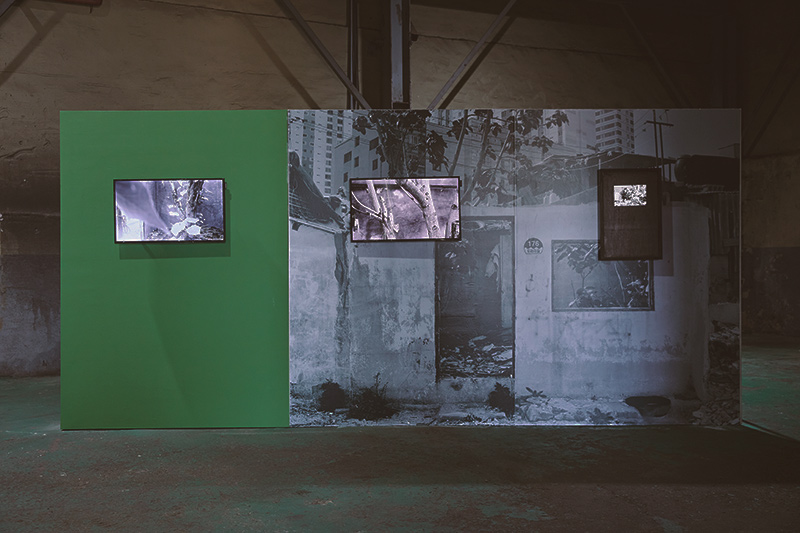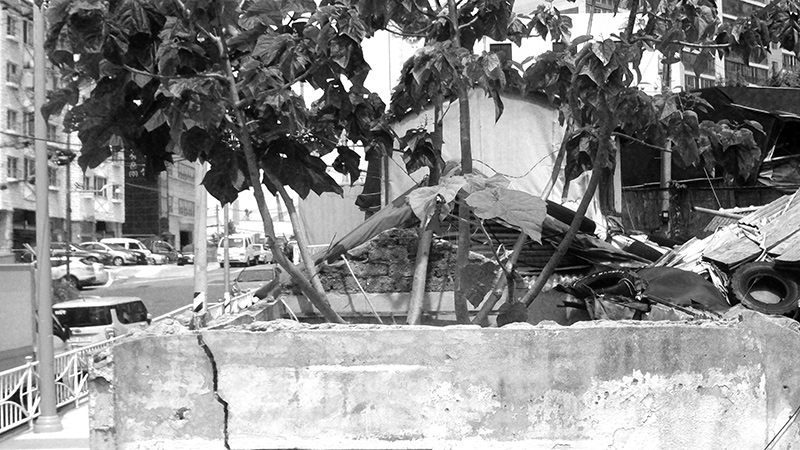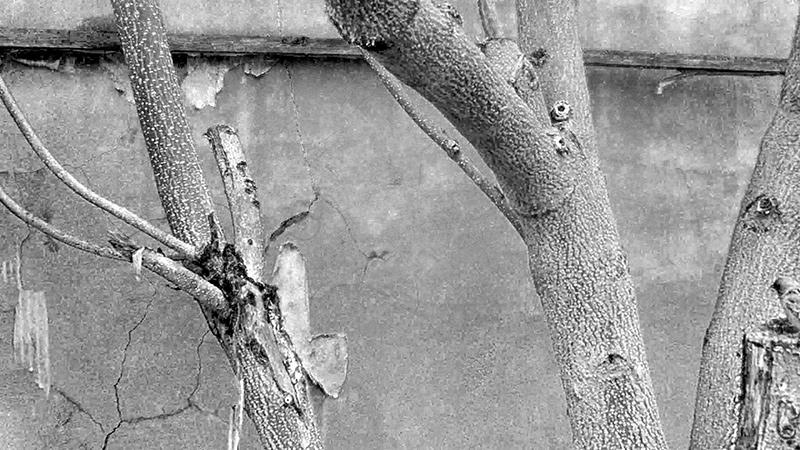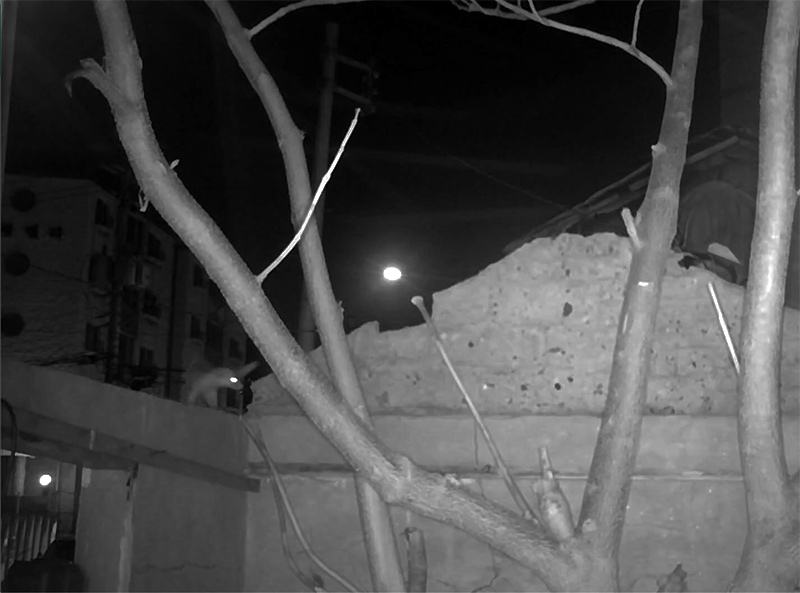All images by the ICZ
ABOUT
Evidence of Things Not Seen II
 Installation view, Evidence of Things Not Seen, Busan Biennale 2020. 3 channel video, HD, sound. Image courtesy of Busan Biennale.
Installation view, Evidence of Things Not Seen, Busan Biennale 2020. 3 channel video, HD, sound. Image courtesy of Busan Biennale.
Robert ZHAO Renhui, Evidence of Things Not Seen, II,2020, Mixed media, variable dimensions, on-going project
Commissioned by Busan Biennale 2020
Special thanks: Jacob FABRICIUS, Pooluna CHUNG, JiYeon SEONG, Jihyun WOO, Bongnae CHO
Music: Coda by George CHUA from the album, Evidence of Things Not Seen, 2006
A Paulownian tree grows inside an abandoned house in Bongnae Dong, the port area of Busan. Unlike most of the trees in the vicinity, which are planted by the municipal government, this tree has grown organically, out of a seed in the rubble.
There is a human and architectural history of this site. When was the house built? Who lived in it? Why was it destroyed?
There is also a cultural and economic significance to this fast-growing species, it is one of the most important trees in China in terms of timber production. It is also found in Japan and Korea, and is used in furniture, decorative products and musical instruments. It is on the back of the 500 Yen Japanese coin. It goes by many names: empress tree; foxglove tree; karri tree; princess tree. It has a particular significance in Japanese tradition: In aristocratic families, when a girl was born, the family used to plant a Paulownia. When the girl got married, the family cut down the tree to make a beautiful chest for the daughter from the wood. In America, it was first imported as an ornamental plant that later became an invasive species. This is the history of the Paulownian Tree but it also tells us little of this very tree on the site in Bongnae Dong.
Based on initial observations and conservations, we know that someone once tried to kill the tree but failed. The tree persists. The tree also houses thousands of insects. Ants, beetles and moths. A single sparrow comes often in the afternoon to feed on the insects. It comes without fail, almost at 2pm every alternate day.
One of my abiding interests as an artist is in non-human actors in human environments, and the unseen relationships between the natural and the manmade. Using remote sensing and time-lapse cameras, I will document the life of this tree a year, capturing its changes in different weathers, its inhabitants and visitors, and other phenomena that are unforeseen. When the video plays out, a sense of “tree” or “plant” time is evoked, a deeper, slow one than time seen and felt on a human scale.
The videos are updated throughout the course of the Biennale.
For more information on the Biennale, click here.
Virtual viewing of Biennale, click here.
 A Paulownian Tree grows inside an abandoned house. The only tree in the city that is not grown by the municipal government. The artist surveryed the tree for a year.
A Paulownian Tree grows inside an abandoned house. The only tree in the city that is not grown by the municipal government. The artist surveryed the tree for a year.
 A sparrow visits the tree everyday at 2pm.
A sparrow visits the tree everyday at 2pm.
 A weasel feeds at the tree once a week in the dead of the night.
A weasel feeds at the tree once a week in the dead of the night.

Evidence of Things Not Seen II Shorts/Trailer
Evidence of Things Not Seen II, 2 Channel View, Screen 1 & 2
Copyright 2020, Institute of Critical Zoologists